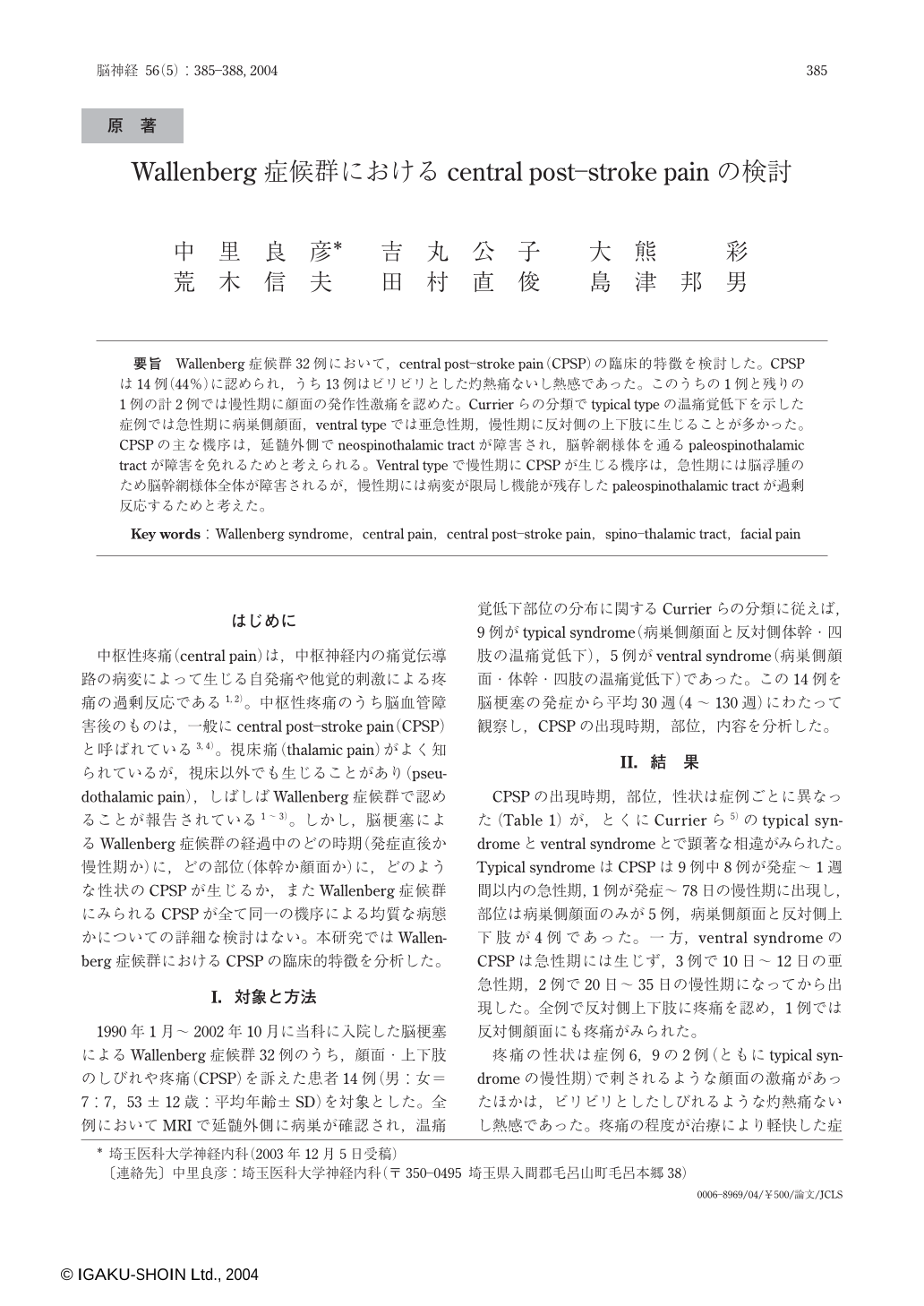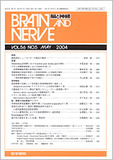Japanese
English
- 有料閲覧
- Abstract 文献概要
- 1ページ目 Look Inside
要旨 Wallenberg症候群32例において,central post-stroke pain(CPSP)の臨床的特徴を検討した。CPSPは14例(44%)に認められ,うち13例はビリビリとした灼熱痛ないし熱感であった。このうちの1例と残りの1例の計2例では慢性期に顔面の発作性激痛を認めた。Currierらの分類でtypical typeの温痛覚低下を示した症例では急性期に病巣側顔面,ventral typeでは亜急性期,慢性期に反対側の上下肢に生じることが多かった。CPSPの主な機序は,延髄外側でneospinothalamic tractが障害され,脳幹網様体を通るpaleospinothalamic tractが障害を免れるためと考えられる。Ventral typeで慢性期にCPSPが生じる機序は,急性期には脳浮腫のため脳幹網様体全体が障害されるが,慢性期には病変が限局し機能が残存したpaleospinothalamic tractが過剰反応するためと考えた。
We analyzed clinical characteristics of central post-stroke pain(CPSP), constant and burning pain, in 32 patients with Wallenberg syndrome due to infarction. CPSP developed in 44%(14/32) of the patients; 8 in acute stage(within 4 days after the stroke) and 8 in chronic stage(10-120 days after the stroke). Apart from one exceptional case, CPSP was present in the hypalgesic side of face and extremities. In 9 cases of typical type(Currier's distribution of sensory disturbance), CPSP occurred in the ipsilateral face to the lesion during acute stage. Among them, 2 cases developed severe lancinating pain in chronic stage. In 5 cases of ventral type, it occurred in the contralateral extremities during chronic stage.
Spino- and trigemino-thalamic tract are injured but medullary reticular formation is intact in Wallenberg syndrome. It is, therefore, considered that CPSP in Wallenberg syndrome is caused by denervation sensitivity of “paleo-reticulothalamic” tract within the reticular formation.
(Received : December 5, 2003)

Copyright © 2004, Igaku-Shoin Ltd. All rights reserved.


